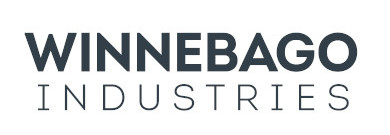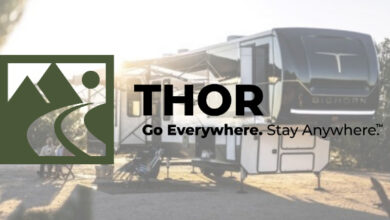LCI Industries Touts Share Gains, Tariff Mitigation in Q2 Report
LCI Industries reported second quarter 2025 results.
“We delivered strong second quarter results, led by our innovative portfolio and competitive moat which together fueled share gains across key categories and generated 5% sales growth with 2% organic content growth. Additionally, we tightened our supply chain, cut indirect spend, and further optimized our footprint, which supported an EBITDA margin of 11%, a sequential expansion of 40 basis points,” said Jason Lippert, president and CEO. “Our proven M&A playbook was reignited in the quarter as we completed the Freedman Seating acquisition, while also returning $67 million of cash to shareholders through dividend and share repurchases. Our liquidity position remains strong, supported by both robust cash generation, ample cash reserves, and access to our credit facility, allowing us to allocate capital where most beneficial and capitalize on opportunities that offer attractive returns.
“Our performance across the first half of 2025 reinforces the resilience of the business,” Lippert continued. “I’m proud of the team’s accomplishments this quarter and am confident our focus on efficiency and flexibility will continue to extend our ability to create strong profits at lower volumes because of the actions we have taken. Looking ahead, we remain on track to reach our $5 billion organic revenue target in 2027 and are making meaningful headway toward our 85 basis point overhead and G&A improvement goal for 2025.”
“Despite the macro environment, our team continues to push LCI Industries forward with a strong foundation of operational discipline,” said Ryan Smith, LCI Industries’ group president – North America. “Our deep-rooted culture of innovation, commitment to service, and relentless focus on quality remains central to how we execute and are key to delivering results through 2025 and beyond. I want to thank our dedicated team members for their outstanding commitment and leadership as they drive growth in the face of ongoing challenges.”
Second Quarter 2025 Results
Consolidated net sales for the second quarter of 2025 were $1,107.3 million, an increase of 5.0% from 2024 second quarter net sales of $1,054.5 million. Net income in the second quarter of 2025 was $57.6 million, or $2.29 per diluted share, compared to $61.2 million, or $2.40 per diluted share, in the second quarter of 2024. Adjusted net income in the second quarter of 2025 was $60.1 million, or $2.39 per diluted share, excluding executive separation costs, net of tax effect, during the quarter, which was down 2% from adjusted net income in the second quarter of 2024. Adjusted EBITDA in the second quarter of 2025 was $121.3 million, compared to Adjusted EBITDA of $122.6 million in the second quarter of 2024. The margin contraction was primarily driven by executive separation costs and changes in product mix for both the OEM and Aftermarket segments. Additional information regarding adjusted net income and Adjusted EBITDA, as well as reconciliations of these non-GAAP financial measures to the most directly comparable GAAP financial measure of net income, is provided in the “Supplementary Information – Reconciliation of Non-GAAP Measures” section below.
The increase in year-over-year net sales for the second quarter of 2025 was primarily due to a $43.4 million increase in net sales of the OEM Segment driven by sales from acquired businesses and higher North American RV sales driven by market share gains and an increased mix of higher content fifth-wheel units compared to the same period of 2024. Net sales from acquisitions completed in the twelve months ended June 30, 2025 contributed approximately $35.0 million in the second quarter of 2025.
July 2025 Results
July 2025 consolidated net sales were approximately $327 million, up 5% from July 2024, primarily due to sales from acquired businesses and pricing, partially offset by a decrease in RV production volume.
OEM Segment – Second Quarter Performance
OEM net sales for the second quarter of 2025 were $839.6 million, an increase of $43.4 million compared to the same period of 2024.
RV OEM net sales for the second quarter of 2025 were $503.3 million, up 3% compared to the same prior year period, primarily driven by market share gains, an increase in RV mix toward higher content fifth-wheel units, and sales price increases related to tariffs, partially offset by volume decreases in the European RV market. Adjacent Industries OEM net sales for the second quarter of 2025 were $336.3 million, up 10% year-over-year, driven primarily by sales from acquired businesses.
Operating profit of the OEM Segment was $51.7 million in the second quarter of 2025, or 6.2% of net sales, compared to an operating profit of $50.6 million, or 6.4% of net sales, in the same period in 2024. The operating profit margin contraction of the OEM Segment for the quarter was primarily driven by executive separation costs and changes in sales mix towards lower margin products, partially offset by production labor efficiencies. Results for the quarter also included higher material costs for tariffs and increased freight costs, which were fully mitigated through a combination of materials sourcing strategies and targeted sales price increases.
Aftermarket Segment – Second Quarter Performance
Aftermarket net sales for the second quarter of 2025 were $267.7 million, an increase of 4% compared to the same period of 2024.
The increase was primarily driven by product innovations and the expanding Camping World relationship within the RV aftermarket, partially offset by lower volumes within the automotive aftermarket. Operating profit of the Aftermarket Segment was $36.1 million in the second quarter of 2025, a decrease of $3.9 million compared to the same period of 2024. The operating profit margin of the Aftermarket Segment was 13.5% in the second quarter of 2025, compared to 15.5% in the same period in 2024. The operating profit margin contraction of the Aftermarket Segment for the quarter was primarily driven by changes in sales mix towards lower margin products, investments in capacity, distribution and logistics technology to support growth of the Aftermarket Segment, and reduced utilization of fixed production overhead costs within the automotive aftermarket due to lower production volumes compared to the same period in 2024. Results for the quarter also included higher material costs for tariffs and increased freight costs, which were fully mitigated through a combination of materials sourcing strategies and targeted sales price increases.
“The aftermarket business delivered strong results in the second quarter as revenue growth and sequential margin expansion were fueled by the continued adoption of product innovations,” said Jamie Schnur, group president – Aftermarket. “As we continue to drive organic content growth, each RV built today represents a future aftermarket touchpoint. To ensure we capture this future growth, we remain committed to investing in technician training, strengthening dealer relationships, and delivering best-in-class service to enhance the customer experience and ultimately foster strong relationships.”



